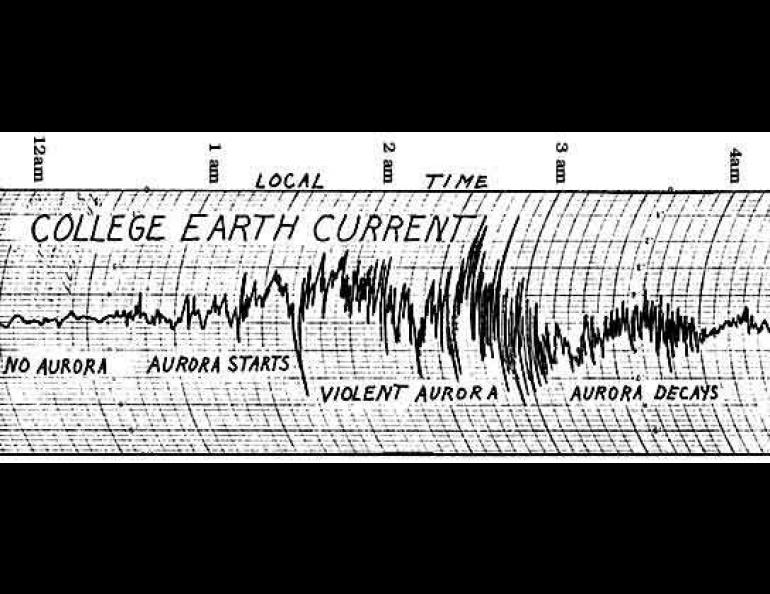
Divining the Aurora
All it takes to find the aurora, day or night, is a pair of sticks. Willow wands will not work because the sticks must be conducting. And, instead of walking across the ground with them, one must drive the metal rods into the ground, at locations several hundred feet apart. A wire is attached to each rod and also attached to one post of a sensitive ammeter or voltmeter.
When the aurora appears overhead, a voltage will be induced in the earth between the rods and electricity will flow in the wire attached between the rods and the meter. If the meter has the ability to record the voltages or currents passing through it, a record similar to the one below will be produced.
During quiet times, when there is no aurora, the recording meter will draw a straight line down the center of the graph. When really bright aurora is overhead, the pen of the meter will sweep back and forth across the paper in response to the auroral activity. The meter can be converted into an auroral alarm by rigging it to ring a bell when major voltage changes appear. Dr. Victor P. Hessler used such an alarm to help him acquire his excellent set of black and white auroral photographs, taken over a period of years.
The reason the earth current meter works is that huge electrical currents flow in the high atmosphere when the aurora appears. These currents induce secondary currents in the earth's surface where they can be easily measured. Despite the simplicity of the earth current recorder, it remains, down through the years, as about the best method to tell when there is aurora overhead. It works day or night, whether the sky is cloudy or clear.
Anyone interested in building an auroral alarm system using the earth current technique should contact us for a few additional hints on how to make the system work best.





